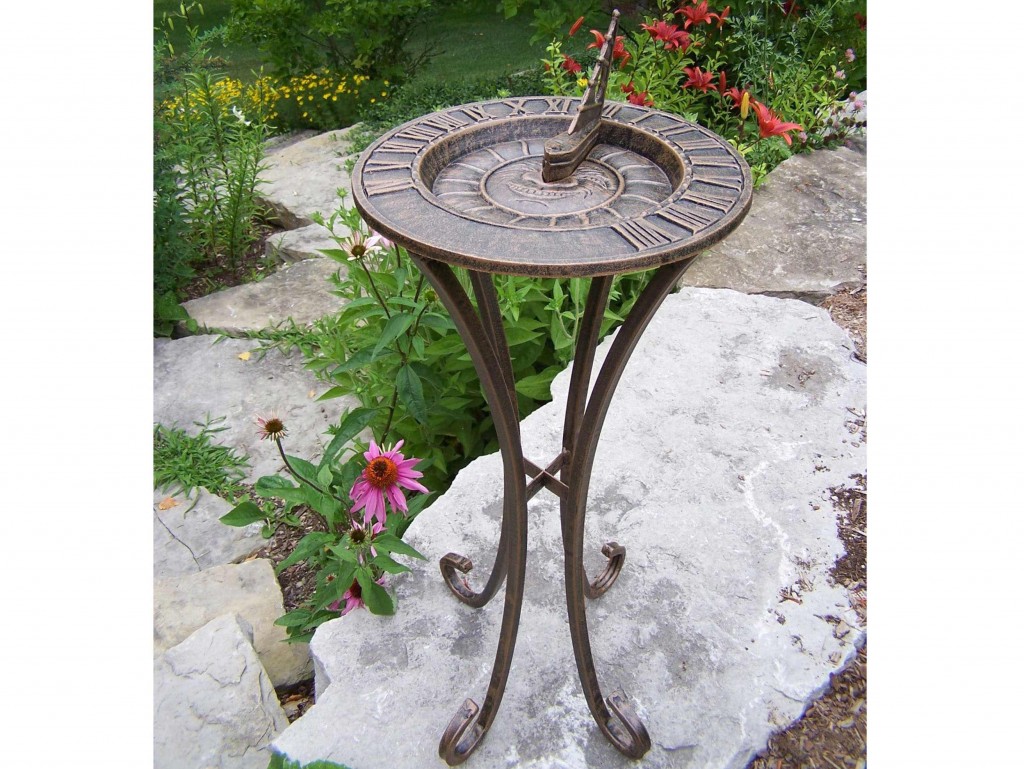For thousands of years, people have been telling time by the position of the sun. Ancient Egyptians noticed that the length of the shadow cast by the sun varied at different times of the day. They calculated time by the shadows cast by tall poles. Eventually, they developed sun dials. Today sun dials are used more for ornamentation, but careful placement of your sundial can also give a fairly accurate display of time.
Prior to positioning your sundial, check the selected location throughout the day to make sure there are no trees, buildings, or other objects that will block the sun. Once you have the perfect location, level the ground and position the pedestal.
Most sundials have a mark that is to be positioned facing the true North Pole. While a compass can be used to determine the proper placement, it really points to the magnetic North Pole, which is different than 90 degrees latitude. You can also wait for high noon on a sunny day and place your sundial so that the shadow cast points to noon. Some sundials come with instructions about placement specific to your latitudinal location.
While we no longer need to use the sun to tell time, a sundial can be a nice addition to your garden.
About Philip Travers
Twitter •



 WishLists
WishLists
 My Account
My Account






